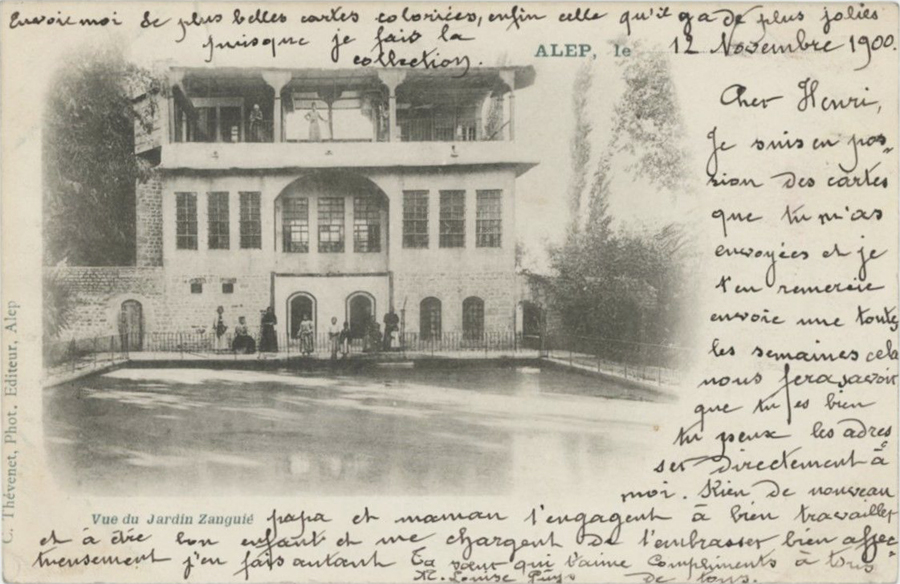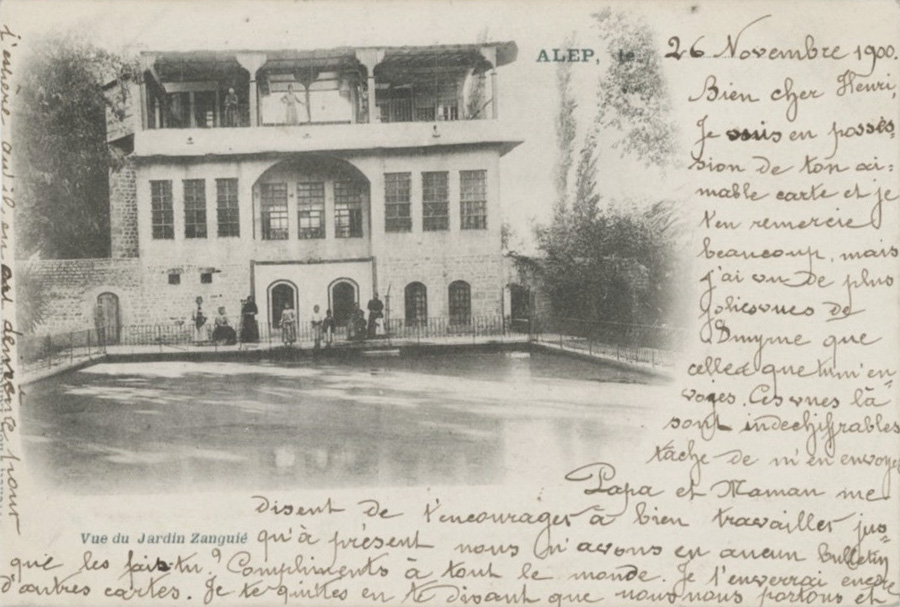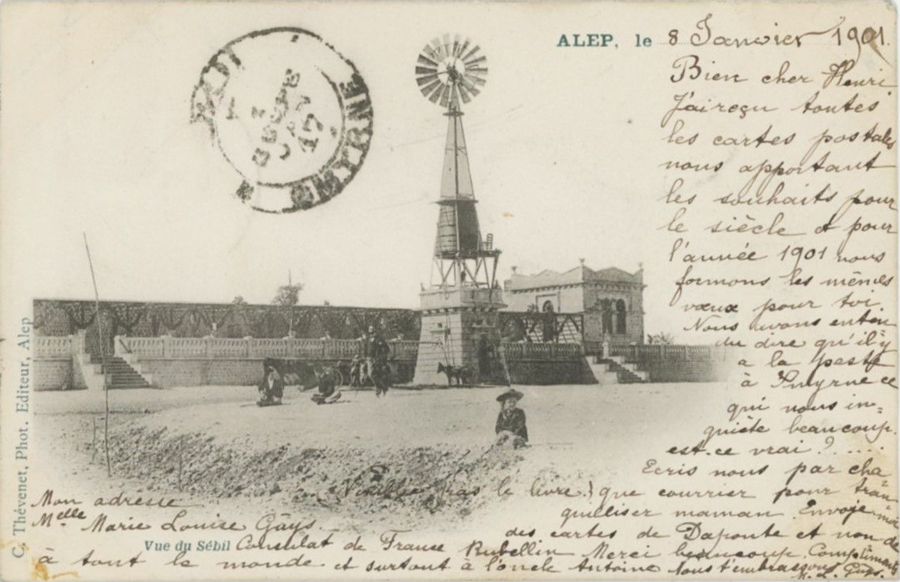
Ephemera
Guys postcards
A trio of postcards sent from Marie Louis Guys in Aleppo to Henri Guys in Smyrna, 1900-01.
Henri Albert Etienne Guys born April 10, 1884 (Scutari- Albania) son of Albert Etienne Guys (°1849) and Emilie Marie Cros (1848-1917). His father was the Chancellor (Chancelier) of the French Consulate in Scutari (Albania) in 1891 (Annuaire Oriental Cervati). His eldest sister was called Marie Louise.
There are many family links between the Guys, the Homsy and the Cros.
The Homsy family came from Aleppo. Habib Homsy - a merchant specialised in construction materials (Annuaire Oriental 1900) - was married to Marie Helene Cros (sister of Emilie). He was therefore Henri Albert Guys’s uncle. Emilie & Marie Hélène Cros had a brother: Antoine Cros who is most probably the ‘oncle Antoine’ they are referring to in the postcard. One of the post cards is addressed to him.
The Cros family was a French family. François Cros (grand-father of Emilie, Antoine and Marie Hélène) was born in Montpellier - was a doctor of Bonaparte in Egypt. He settled in Smyrna where he married the daughter of a French merchant.
The Guys family came from Provence and settled first in Constantinople at the end of the 18th century, then in Smyrna.
Henri Albert Guys married Marie Louise Homsy - daughter of George Homsy and niece of Habib Homsy - on Sept 29, 1912 in Alexandria (Egypt).
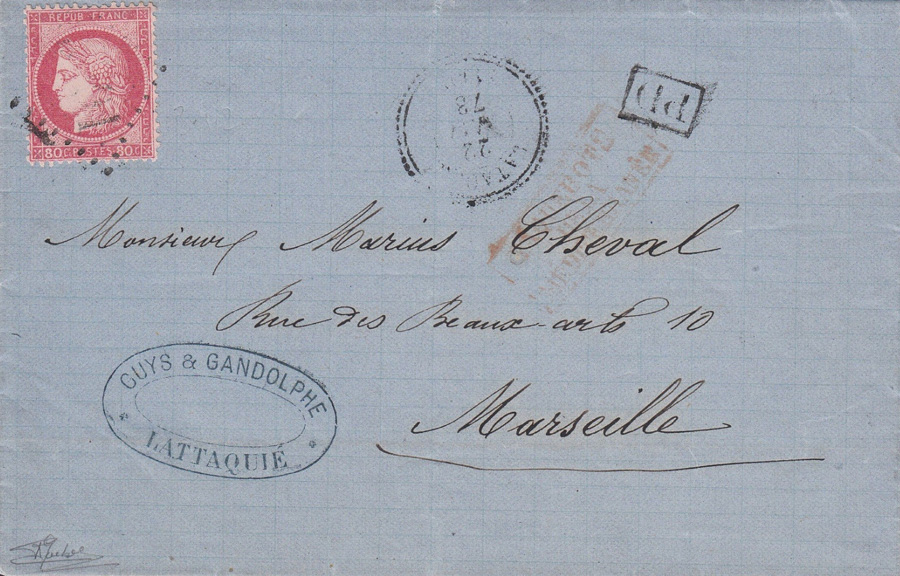
Postcard from 1873 pointing to a business partnership between a Guys member and the Galdolphe family in Lattakia, Ottoman Syria.
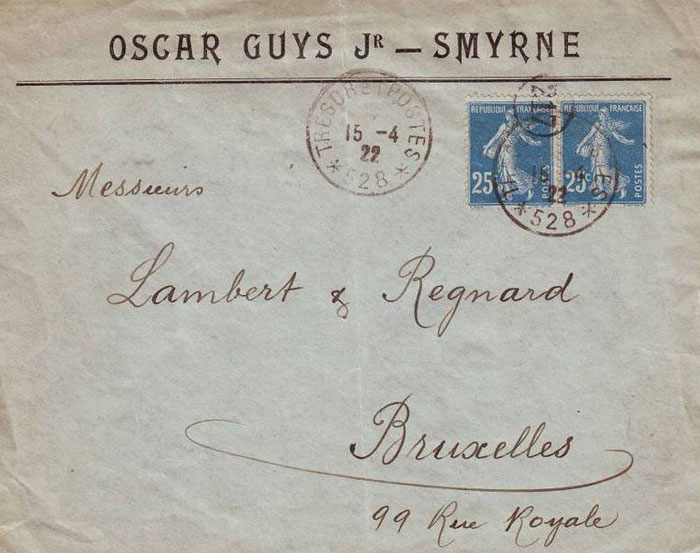
Oscar Guys lettercover from 1922, Smyrna.
Further information on the Guys family in French, courtesy of Jacques Caporal:
Anecdote:
Maraya Cros (sister of Emilie, Antoine & Marie Hélène) married George Thomas Braggiotti: she was the grand mother of Henri Langlois (1914-1977) who created in Paris the famous Cinémathèque.
Postcards were printed in huge numbers around the world in the late 19th early 20th century and were used by people as keep-sakes, such as these from 1919 and slightly later of Smyrna printed during the Greek occupation 1919-22. They in turn provide us with a visual reference of how the cityscape looked like at the time and what those people considered emblematic.

